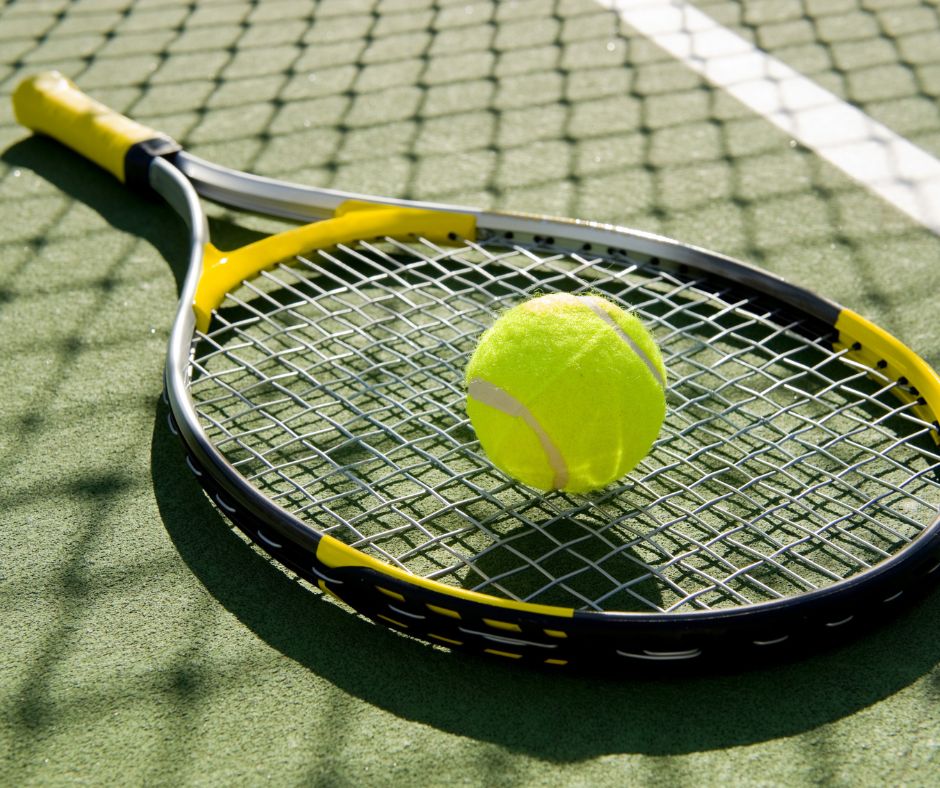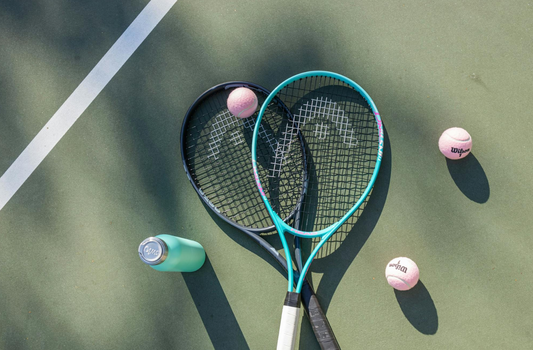
Tennis racquets may seem like they’re all pretty much the same, with the only differentiating factors being brand names or color, but there are actually many different components that you should take into account when purchasing your first racquet. While you could certainly play tennis with a hand-me-down racquet, if you’re going to spend money on your own racquet, it’s highly advisable to do some research to pick a racquet that is suitable for your needs. The right racquet can significantly influence your initial experience with playing tennis and how you continue to develop in the sport. This guide aims to simplify this choice and help beginners select a racquet that best suits your needs.
Racquet Components
In order to understand the options that you need to consider when choosing a racquet, it’s essential to go over the main features of a tennis racquet.
Head Size
Head size refers to the size of the racquet’s hitting area. A larger head size offers more power and a larger sweet spot, making it more forgiving for beginners. The downside to a larger head size is having less control. Racquets come in four sizes: midsize (85-95 sq. in.), midplus (96-105 sq. in.), oversize (106-115 sq. in), and super oversize (116+ sq. in.). Most beginners would benefit from playing with an oversize racquet.

Weight
When choosing a racquet, it’s common to think about the trade-off between power vs. control. A heavier racquet provides more power, but it can be harder to maneuver and may be more stressful on your arm. Lighter racquets offer more control and are easier on the arm. Think about how much easier it is to knock down bowling pins with a heavier ball, but if the ball is too heavy for you, you won’t be able to roll it properly. Finding a good balance is key. Playing style is also a factor when choosing the proper weight of a racquet. Heavier racquets are better suited to baseline players. Most beginners are better off starting out with a lighter racquet. Beginners should choose a racquet between 260-280 grams, intermediate players should choose a racquet between 285-305 grams, and advanced players should choose a racquet between 300-320 grams.
Length
The length of a racquet is measured from the tip of the head down to the bottom of the handle. Most racquets fall between 27 inches and 29 inches. The longer the racquet, the bigger the reach, but longer racquets are more difficult to maneuver. Thus, 27 inches is the most common racquet length used by most players.
Balance
The balance point of a racquet is the point at which the weight is evenly distributed between the head and the handle. An evenly-balanced racquet has a balance point exactly in the middle. Racquets can either be evenly-balanced, head-heavy, or head-light. Head-heavy racquets are more suitable for baseliners, whereas head-light racquets are more suitable for serve and volleyers.
Grip Size
Grip size is what makes sharing a racquet or getting a hand-me-down unideal. The grip should fit comfortably in your hand. Anything too large or too small can affect play and, more importantly, can lead to injuries such as tennis elbow. Typically, the grip size falls within the range of 4 in. - 4 ⅝ in., with most women needing a 4 ¼ (grip size 2). You can measure your grip size with a ruler by measuring the distance between the bottom lateral crease of your palm to the tip of your ring finger. If you’re between grip sizes, it’s better to choose the smaller size and add an overgrip to your racquet.

Playing Style and Physical Considerations
As mentioned before, choosing the right racquet is often based on finding the balance between power and control. As a beginner, you will likely benefit from a racquet that provides more power since you should focus on developing your hitting strength rather than trying to hit precisely to specific areas on the court. However, if you are naturally strong, you might want a racquet that offers you more control.
Your age, strength, and physical fitness can also influence which racquet is best for you. Younger and more senior players, or those with less physical strength, might prefer lighter racquets to minimize the likelihood of developing tennis elbow.
Other Considerations
Pre-strung vs. Frame Only
When you’re at a sporting goods store, you may see some racquets that are pre-strung and others that are frame only. As a beginner, a pre-strung racquet is a practical choice since you won’t need to make decisions about string type and tension. Pre-strung racquets can also be more cost-effective since you won’t have to pay extra for strings.
However, if you plan on taking tennis seriously, you may want to opt for a frame that you then get strung. Pre-strung racquets utilize cheap, inferior strings, and they aren’t strung to a specific tension. Since the strings are the part of the racquet that make contact with the ball, putting the effort into getting the right strings and tension for your ability level and needs will be helpful in the long run.
Budget
Tennis racquets can range anywhere from $30 - $300, with most beginner racquets averaging between $60-$120. A more expensive racquet doesn’t necessarily mean a better racquet, so set a budget and find one that suits your needs while falling in your price range.
Once you find the best racquet for you, if you can afford to purchase two of the same racquet, you will always have a spare in case your strings break during a match.
Testing Out Racquets
If you are someone who just wants to give tennis a try and didn’t realize there are so many factors to consider when picking out your first racquet, don’t worry. There are many tools available online to help you find the right racquet. If you search for a racquet finder, many websites have simple questionnaires for you to fill out to help you find the best options for you to consider. Some are offered by specific manufacturers, so they will only recommend their own brand, but others compare all brands to help you compare. If online shopping is not your thing, you can also go to a sporting goods store or tennis store and ask a clerk for recommendations.
Once you have done your research and have narrowed your choices down to a few top options, see if you can test them out before purchasing a racquet. Many brick-and-mortar as well as online retailers have demo programs that allow you to test out a few racquets before purchasing the one that you ultimately want.
Conclusion
Choosing your first tennis racquet is an exciting step! Overall, try not to fret too much about the process. Remember that the ideal racquet is one that feels right in your hands and suits your playing style. As you develop as a tennis player, your preferences and needs might change, but take this first step of your tennis journey knowing that it won’t be the last, and enjoy the ride!




